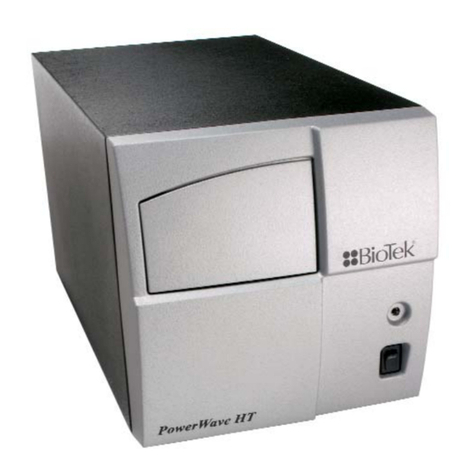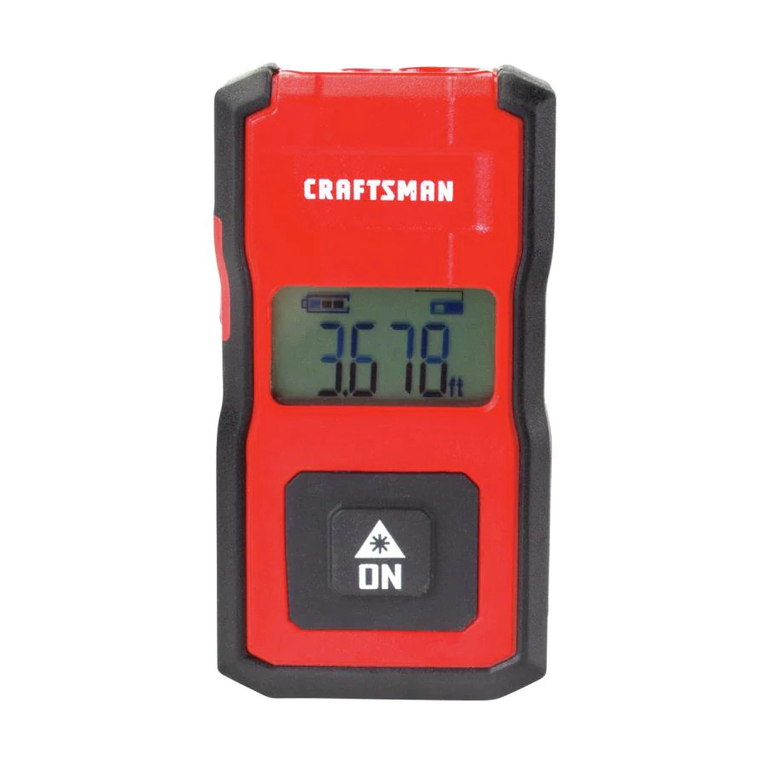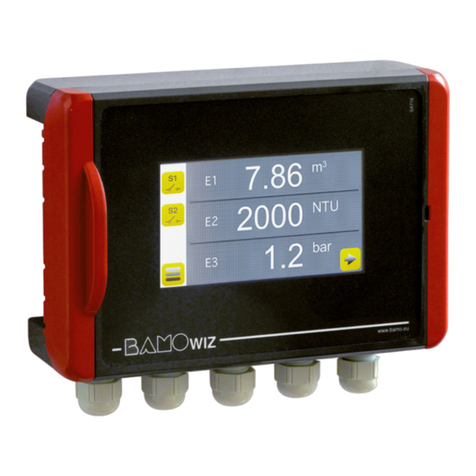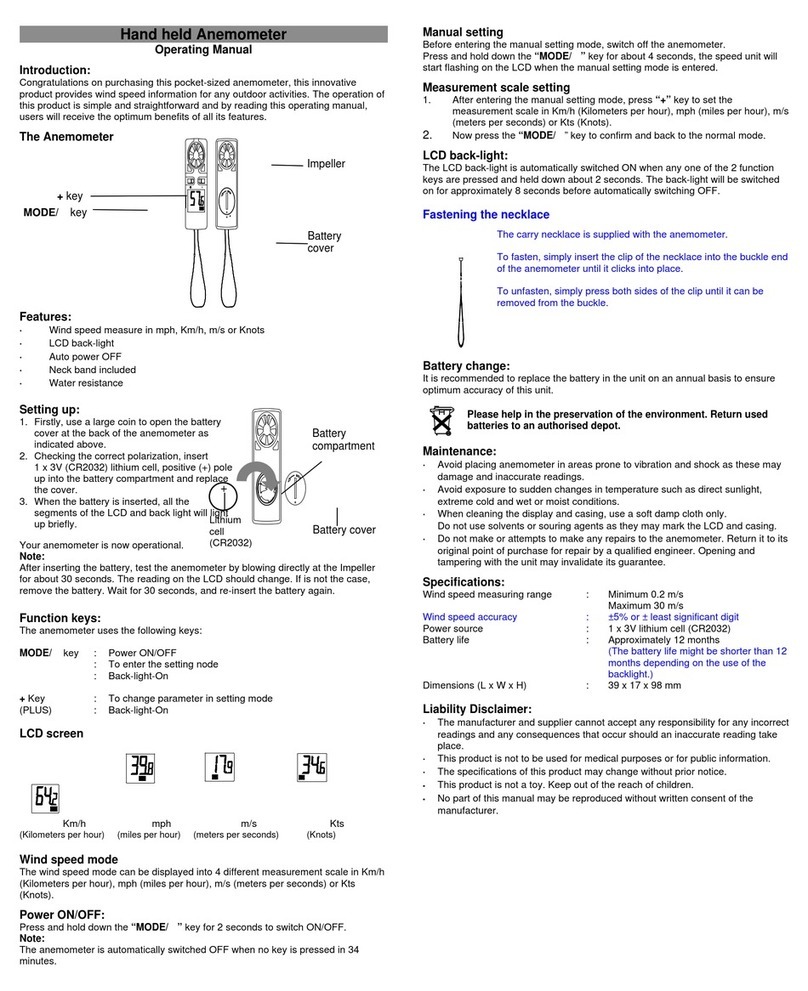Bio-Tek QED-III User manual

DEFIBRILLATOR
ANALYZER
MODEL
QED-III
OPERATOR'S
MANUAL
BIO-TEK
INSTRUMENTS,
INC.

E
|
mm
==
BIO-TEK
INSTRUMENTS
DEFIBRILLATOR
ANALYZER
MODEL
QED-III
OPERATOR’S
MANUAL
MANUAL
PART
NUMBER
3330100
FOR
SERIAL
NUMBERS
2218
AND
UP
REVISION
A
SEPTEMBER
1986
BIO-TEK
INSTRUMENTS,
INC.
HIGHLAND
PARK,
BOX
998
WINOOSKI,
VT
05404-0998
USA
800-451-5172
802-655-4040
TELEX
94-0136
BIO
TEK
SHVT
0-1

)
DOCUMENT
REVISION
RECORD
J
|
ages
e,
e
Şe
|
i
J
|
|
|
|
|
]
|
i
|
y
|
gi ]
1

E
| |
m
|
=
|
Е
α
mm
=
]
m
|
TABLE
OF
CONTENTS
DOCUMENT
REVISION
RECORD
TABLE
OF
CONTENTS
LIST
OF
FIGURES
INTRODUCTION
TO
QED-III
OPERATOR’S
MANUAL
1
mm
Ne
3.2.1
322
33
3.4
4.1
4.2
4.3
5.1
52
5.3
531
532
5.4
5.4.1
5.4.2
OED-III
GENERAL
INFORMATION
Summary
of
features
Applications
OED-III
DESCRIPTION
QED-III
specifications
OED-III
description
SAFETY,
MAINTENANCE,
STORAGE,
SHIPPING,
AND
WARRANTY
Electrical
safety
Maintenance
Cleaning
Battery
replacement
Storage
and
shipping
Warranty
INSTALLATION
Operating
precautions
Unpacking
and
inspection
Preparation
for
use
OPERATION
General
Battery
check
Test
procedure
Testing
defibrillator
energy
output
Defibrillator
output
measurements
and
recordkeeping
Instructions
for use
with
an
oscilloscope
Equipment
setup
Testing

6.1
6.2
6.2.1
622
TABLE
OF
CONTENTS
(CONTINUED)
CALIBRATION
Calibration
equipment
list
Calibration
Energy
measurements
Opto-isolated
scope
output
TROUBLESHOOTING
PARTS
LIST
QUESTIONNAIRE
0-4

Page
2-3
3-3
2.2-1
3.2.2-1
5.1-1
5.2-1
5.3.2-1
6.2.1-1
6.2.2-1
LIST
OF
FIGURES
QED-III
isometric
view
OED-III
component
layout
(rear
view)
Block
diagram
Main
switch
PC
board
schematic
Recommended
recordkeeping
Main
printed
circuit
board
Setup
for
opto-isolated
calibration
Troubleshooting
procedures

This
page
intentionally
left
blank.

|
Si
a
αυ
©
N
En
=
πα
m
o
nina
=
α
α
EM
co
INTRODUCTION
TO
OED-III
OPERATOR'S
MANUAL
This
document
is
the
operator's
manual
for
the
Bio-Tek
Defibrillator
Analyzer
Model
OED-III.
It
contains
general
information
about
the
OED-III,
a
description
of
its
com-
ponents,
and
instructions
for
its
use.
If
a
problem
develops,
the
user
should
contact
Bio-Tek
at:
1-800-451-5172.
The
user
should
never
attempt
to
service
the
unit
before
consulting
with
Bio-Tek
service
personnel.
The
objectives
of
this
manual
are
to
provide:
1.
sufficient
information
about
the
design
of
the
OED-III
to
enable
the
user
to
understand
its
use
(Sections
1
and
2);
2.
detailed
guidance
for
maintaining,
storing,
and
shipping
the
unit
(Section
3);
3.
procedures
for
setting
up
the
QED-III
(Section
4),
for
operating
the
unit
(Section
5),
for
calibrating
the
unit
(Section
6),
and
for
troubleshooting
(Section
7);
and
4.
a
parts
list
(Section
8).
After
becoming
familiar
with both
the
OED-III
and
this
manual,
please
take
the
time
to
answer
the
guestionnaire
at
the
back
of
the
manual.
We
want
your
feedback
to
help
us
to
continually
improve
our
products
and
our
documentation.
0-7

_
ωα
αο
п п Ш
п
п
na
E
rm.
mm
m
α
02
1
QED-III
GENERAL
INFORMATION
1.1
Summary
of
features
Bio-Tek
has
designed
the
QED-III,
a
quantitative energy
measuring
system,
to
test
AC
and
DC
defibrillators
for
their
energy
output
during
operation.
The
QED-III
is
port-
able,
lightweight,
and battery
operated
and
can
be
used
wherever
the
energy
output
of
a
defibrillator
needs
to
be
evaluated.
The
instrument
is
easy
to
operate;
test
data
can
be
quickly
and
accurately
read
from
the
OED-III
meter.
1.2
Applications
The
QED-III
is
designed
to
test
defibrillators
that
have
grounded
or
ungrounded
paddles.
The
test
data
supplied
by
the
QED-III
help
medical
personnel
ensure
that
the
energy
output
required during
basic
life
support
is
actually
produced.
The
OED-III
also
enables
medical
personnel
to
observe
the
waveform
of
the
energy
produced
by
a
defibrillator.
The
waveform
is
displayed
on
an
oscilloscope
that
is
plugged
into
jacks
provided
on
the
QED-III.
Since
the
QED-III
is
portable
it
can
be
used
in
operating
rooms,
intensive
care
units,
coronary
care
units,
and
rescue
vehicles.
Defibrillators
are
used
during
emergency
critical
care
and
must
always
function
properly;
the
energy
measurement
data
provided
by
the
QED-III
help
ensure
that
the
defibrillators
produce
the
desired
energy.
1-1

———
ì
Γ
mE
i
ME
EM
=
=
mm
6
02
02
=-
2.1
OED-III
specifications
QED-III
DESCRIPTION
The
OED-III
is
designed
for use
with
AC
and
DC
defibrillators
and
sums
the
positive
and
negative
output
energies.
Meter
Readings
Display
Capability
(Size
of
Scale)
Input
Impedance
Accuracy
Ranges
Reading
Duration
Power
Battery
Life
Waveform
Display
Capability
Dimensions
Weight
Displayed
in
watt-seconds
(joules)
4
1/2
inches
(11.4
cm)
50
ohms
+/-
1%
+/-
2%
of
full
scale
for
all
waveforms,
including
trapezoidal
waveforms
to
50
milliseconds
in
duration
and
high-voltage
pulses
to
7000
V
in
amplitude
0
—
50
watt-seconds
(1
watt-second
increments)
0
—
500
watt-seconds
(10
watt-seconds
increments)
0
—
1000
watt-seconds
(20
watt-seconds
increments)
Controlled
by
depression
of
the
lefthand
contact
plate
Four
9
V
alkaline
transistor
batteries
(Duracell®
MN1604
or
equivalent)
Greater
than
one
year
2
female
banana
jacks
for
oscilloscope.
Attenuation
is
1:10,000
of
input
waveform.
Isolated
through
an
opto-
isolator.
5"
H
x
14-3/4"
W
x
8-3/4"
D
(12.7
cm
x
36.2
cm
x
22.2
cm)
8.7
pounds
(3.9
kg)
R
Duracell
is
a
registered
trademark
of
Duracell
U.S.
A.
2-1

2.2
QED-III
description
The
OED-III
is
housed
in
a
heavy-duty
formica
case.
The
cover
of
the
unit
rests
on
a
rubberized
seal
when
the
unit
is
closed,
forming
a
barrier
to
dust
and
other
foreign
particles.
The
cover
of
the
QED-III
can
be
removed
completely
by
positioning
the
unit
so
that
the
meter
faces
the
user,
unlatching
the
locks
and
then
pushing
the
cover
to
the
right.
The
QED-III
is
carried
by
a
sturdy
handle
bolted
into
the
front
of
the
case.
The
QED-III
can
be
placed
upright
or
flat
when
in
operation;
rubber
feet
protect
both
the
supporting
surface
and
the
QED-III.
The
meter
face
of
the
QED-III
is
divided
into
three
scales
as
illustrated
in
Figure
2.2-1.
The
scales
are
as
follows:
Scale
Range
Resolution
0
—
50
watt-seconds
1
watt-second
0
—
500
watt-seconds
10
watt-seconds
0
—
1000
watt-seconds
20
watt-seconds
Note
that
the
lefthand
scale
reads
both
the
0-to-50
and
the
0-to-500
ranges;
when
read-
ing the
lower
range,
disregard
the
final
zero
on
this
dual
scale.
A
battery
check
line
(red)
is
located
at
mid-scale
on
the
meter.
The
adjustment
screw
for
the
meter
needle
is
also
located
at
mid-scale,
to
the
right
of
the
meter
window.
The
female
banana
jacks
are
used
for the
isolated
output
when
the
QED-III
tests
the
waveform
of
the
energy
produced
by
a
defibrillator.
The
black
jack
is
for
the
ground
lead
from
the
oscilloscope;
the
red
jack
is
for
the
probe.
The
activation
switch
for the
QED-III
is
located
underneath
the
lefthand
contact
plate.
The
unit
is
"ON"
when
this
plate
is
depressed
because
this
switch
powers
the
electronic
circuitry
of
the
QED-III.
The
QED-IU
simulates
the
transthoracic
resistance
(TTR)
of
the
human
body
and
measures
the
output
from
a
defibrillator
subjected
to
this
resistance.
2-2
|
0
п
в
п
_
O
D
ῳᾳα
E
α
α
E
EN
in.

INSTRUMENT
COVER
RANGE
SELECTION
SWITCH
BATTERY
CHECK
BUTTON
ISOLATED
OUTPUT
JACKS
CONTACT
PLATE
BATTERY
CHECK
LINE
METER
ADJUSTMENT
SCREW
700
Е
500
E
400
CONTACT
PLATE
Figure
2.2-1.
QED-III
isometric
view
2-3

IN IN
-
es
©
=
]
==
EH
=
mm
U
=
==
]
3
SAFETY,
MAINTENANCE,
STORAGE,
SHIPPING,
AND
WARRANTY
3.1
Electrical
safety
An
electrical
safety
inspection,
including
leakage
tests,
should
be
performed
monthly
on
the
defibrillator.
The
details
of
these
tests
are
found
in
the
following
Electrical
Safety
Analyzer
manuals
available
from
Bio-Tek
Instruments,
Inc.:
Electrical
Safety
Analyzer
Model
370,
Operator’s
Manual
Digital
Safety
Analyzer
Model
170,
Operator’s
Manual
Digital
Safety
Analyzer
Model
501,
Operator’s
Manual.
In
addition
to
leakage
tests,
the
following
safety
precautions
must
be
followed
to
en-
sure
the
safety
of
the
operator
when
using
a
defibrillator:
1.
Inspect
the
defibrillator
daily.
Examine
the
paddles,
lead
wires,
and
power
cord
for
cracks
and
frays.
2.
If
the
defibrillator
is
line
powered,
be
sure
that
it
is
plugged
into
a
grounded
receptacle.
3.
Do
not
touch
the
paddles
on
the
defibrillator.
4.
Grip
one
paddle
in
each
hand.
Apply
the
paddles
firmly
(approximating
25
pounds
of
pressure)
to
the
QED-III
plates.
Keep
the
paddles
firmly
depressed
on
the
plates
to
prevent
arcing
that
can
cause
injury
to
the
operator
and
can
damage
the
OED-III
or
the
defibrillator.
5.
Do
not
touch
the
contact
plates
on
the
QED-III
when
the
defibrillator
paddles
are
being
pressed
onto
the
plates.
6.
Do
not
use
any
electrical
paste
or
pads
when
testing
a
defibrillator
with
the
QED-III.
7.
When
replacing
the
batteries
of
the
OED-III
(as
described
in
Section
3.2.2),
all
circuits
are
exposed.
Do
not
touch
any
part
of
the
QED-III
with
the
defibril-
lator
paddles.
3-1

3.2
Maintenance
3.2.1
Cleaning
The
QED-III
must
be
kept
clean
and
moisture-free
at
all
times.
The
unit
can
be
cleaned
effectively
as
follows:
CIRCUIT
BOARD
1.
After
soldering,
use
an
acid
brush
dipped
in
isopropyl
alcohol
to
remove
flux
and
dirt
residue.
Wipe
dry
with
a
paper
towel.
Caution:
Use
the
isopropyl
alcohol
in
a
well-ventilated
area.
Do
not
smoke
or
use
near heat
or
flame.
2.
Repeat
if
necessary.
PANEL
1.
Use
compressed
air,
30
psi
maximum,
to
blow
dust
off
of
the
panel.
2.
Use
all-purpose
spray
cleaner
(409®
or
equivalent)
on
the
electrode
plates,
meter
and
overlay.
Caution:
Do
not
use
solvents
that
damage
plastic.
CASE
1.
Clean
the
outside
formica
surface
with
the
all-purpose
spray
cleaner.
Wipe
dry
with
a
paper
towel.
2.
Use
compressed
air
to
blow
dust
out
of
the
inside
of
the
case.
Caution:
The
inside
of
the
case
must
be
moisture-free
to
prevent
corrosion
of
the
electrical
components.
3.2.2
Battery
replacement
When
the
QED-III
meter
indicates
a
reading
below
the
red
battery
check
line
during
the
battery
test
(Section
4.3),
all
four
9
V
batteries
must
be
replaced.
Before
replacing
the
batteries,
reread
Section
3.1:
Electrical
safety.
1.
Remove
the
four
corner
screws
in
the
QED-III
panel.
2.
Lift
the
panel
out
of
the
case
and
turn
to
expose
the
batteries.
(Refer
to
Figure
3.2.2-1 for
location
of
the
batteries.)
R
409
isa
registered
trademark
of
the
Clorox
Company.

REAR
VIEW
5
SUBPANEL
3340007
F
«Eh
一
一
一
一
BAOI
E
447005
BATTERY
14
GA
©
(WITH
WIRE)
TERMINAL
©
BLK
MI
R20
R2I
234
OHM
23.4
OHM
100
WATTS
|
100
WATTS
BLU
O
}+
BAO2
X
#92004
—22
一
WHT,
¡Blu
)
©
|
|
voh
©)
ολ
-
GRN
VIO
BAO3
|*
)
(ON
PC
BOARD)
)
RD
METER
HOLD-DOWN
$
42071
J2/P2
|
2
PLACES
XX
©
|
80041
(ON
PC
BOARD)
14
GA
…
р
>
#42071
BLK
|
R24
(ery
R23
R22
14
GA
BLK
#
42050
|
y
©
JRED
fe
RANGE
SELECTION
の
#42001
이드
SWITCH,
SI
J2
BLK
#42002
COLOR
KEY:
BLK
=
BLACK
RED
=
RED
KEY:
%
BATTERY
TERMINAL
(SAME
AS
#47005
WITH
WIRE)
BLU
=
BLUE
VIO=
VIOLET
%
%
HOLD-DOWN
COMES
WITH
BEZEL
#92008
GRN
=
GREEN
WHT
=
WHITE
#
PART
NUMBER
Figure
3.2.2-1.
QED-III
component
layout
(rear
view)
3-3

3.
Remove
the
battery
clips
from
the
batteries
and
remove
the
batteries
from
their
holders.
4.
Replace
the
batteries
with
Duracell
MN1604
batteries
or
the
equivalent.
5.
Test
the
two
new
batteries
for the
meter
by
pressing
the
red
battery
check
button
on
the
meter
face.
The
meter
must
read
above
the
red
check
line.
6.
Test
the
two
new
batteries
that
are
used
in
the
opto-isolator
circuit
by
depressing
the
activation
switch
(the
lefthand
contact
plate).
Check
that
the
terminal
voltage
across
BA03
and
BA0O4
is
greater
than
7.5
V.
(Refer
to
Figure
3.2.2-1
for
the
location
of
BA03
and
BA04.)
7.
Place
the
QED-III
panel
back
into
the
case.
8.
Tighten
the
four
corner
screws.
3.3
Storage
and
shipping
The
QED-III
should
be
stored
at
77°
F
(25°
C)
with
a
relative
humidity
of
50%.
The
cover
on
the
QED-III
should
always
be
closed
and
the
latches
snapped
during
storage
and
shipping.
The
storage
environment
should
be
free
of
vibration.
3.4
Warranty
Bio-Tek
warrants
the
OED-III
to
the
original
purchaser
for
a
period
of
one
year
from
the
original
purchase
date.
The
warranty
is
for
normal
use
and
service,
against
defec-
tive
materials
or
workmanship.
If
the
customer
ships
the
QED-III
defibrillator
analyzer
to
Bio-Tek,
postage
pre-paid,
and
Bio-Tek
determines
the
defect
to
be
in
materials
or
manufacturing,
Bio-Tek
shall
either
repair
or
replace
the
unit
at
Bio-Tek’s
option,
without
cost
to
the
customer.
This
warranty
is
void
if
the
QED-III
has
been
visibly
damaged
by
accident,
misuse,
or
has
been
repaired
or
altered
by
persons
or
stations
not
authorized
by
Bio-Tek,
or
which
has
had
the
serial
number
altered,
defaced,
or
removed.
Batteries
are
not
covered
by
this
warranty.
Bio-Tek Instruments
reserves
the
right
to
discontinue
the
OED-III
at
any
time
and
to
change
specifications,
price,
or
design,
without
notice
and
without
incurring
any
obligation.
Bio-Tek
will
continue
to
stock
service
parts
for
up
to
5
years
after
the
manufacture
of
the
unit has
been
discontinued.
Parts
shall
include
all
materials,
charts,
instructions,
diagrams,
and
accessories
that
are
furnished
with
the
unit.
The
purchaser
agrees
to
assume
all
liability
for
any
damages
or
bodily
injury
which
may
result
from
the use
or
misuse
of
the
unit
by
the
purchaser,
his
employees,
agents,
or
customers.
E
cum
LAB

ви
п
пы
в Ш
ως
=
.
mm
ET
m
mm
|
|
m
a
E
E
mm
ma
4
INSTALLATION
4.1
Operating
precautions
Refer
to
Section
3.1:
Electrical
safety,
for
precautions
that
must
be
followed
to
ensure
the
safety
of
the
OED-III
operator.
4.2
Unpacking
and
inspection
Inspect
the
OED-III
for
cracks
or
scratches
on
either
the
panel
and
the
case.
Check
the
meter
needle
to
ensure
that
it is
intact.
Carefully
inspect
the
handle
to
ensure
that
it
is
firmly
attached
to
the
case.
If
any
damage
is
found,
immediately
call
Bio-Tek
Instruments
at:
1-800-451-5172.
4.3
Preparation
for use
Find
a
relatively
level
surface
on
which
to
place
the
QED-III.
Unlatch
the
locks
on
the
unit
and
place
it
facing
the
operator
so
that
the
meter
scale
can
be
easily
read.
4-1

|
ES
E
==
5
OPERATION
5.1
General
The
QED-III
measures
the
energy
delivered
by
a
defibrillator
by
simulating
the
human
body’s
resistance
to
current
flow
and
then
measuring
the
flow
of
energy
through
that
resistance.
The
resistance
of
the
human
thorax
(i.e.,
the
TTR)
under
high
voltage
pulse
conditions
has
been
measured
and
found
to
be
between
40
and
120
ohms.
The
standard
resistance
chosen
in
the
measurement
of
the
output
energy
of
defibrillators
is
50
ohms.
The
QED-III
has
an
internal
resistance
of 50
ohms,
thus
simulating
the
resistance
of
the
human
body.
The
OED-III
is
a
precision
analog
instrument
that
computes
the
time
integral
of
the
power
output
from
a
defibrillator
discharge.
Energy
is
the
product
of
current
and
voltage
summed
over
the
time
during
which
the
current
and
voltage
are
applied.
Mathematically,
energy
is
expressed
as:
W
=
я
E(t)
I(t)
dt
0
where:
W
=
energy
E(t)
=
voltage
as
a
function
of
time
I(t)
current
as
a
function
of
time.
Ohm’s
Law
can
be
expressed
by
the
following
equation:
E(t)
=
I(t)R
where:
current
as
a
function
of
time
resistance
in
ohms.
I(t)
R
ии
The
preceding
two
equations
can
be
combined
to
give
the
following
energy
relationship:
У
É
R
I
(1)
dt
where:
7
u
50
ohms.
5-1

The
QED-III
performs
an
energy
measurement
by
attenuating
the
input
current;
the
QED-III
uses
less
than
1/1000
of
the
current
supplied
by
the
defibrillator.
The
QED-
III
squares
the
input
current
using
a
current
squaring
network
and
sums
the
current
value
(i.e.,
mathematically
integrates)
using
a
precision
integrated
circuit
while
at
the
same
time
multiplying
by
the
constant
R;
this
provides
the
exact
energy
of
the
applied
pulse.
Figure
5.1-1
shows
what
happens
electrically
to
the
output
from
a
defibrillator
when
it is
passed
through
the
QED-III.
5.2
Battery
check
It
is
recommended
that
the
following
battery
check
be
performed
before
each
test
series
whenever
there
is
a
time
lag
between
testing.
1.
Push
the
red
battery
check
button
located
below
the
QED-III
meter
(see
Figure
2.2.1).
2.
Observe
the
meter
reading.
If
the
meter
reads
above
the
red
line,
the
bat-
teries
used
for
energy
measurements
are
satisfactory.
3.
If
the
meter
reads
below
the
red
line,
refer
to
Section
3.2.2:
Battery
replacement.
LOAD
LE
SIMULATOR
&
RECTIFIER
SQUARING
FROM
>]
over
>
NETWORK
>
CIRCUIT
FIBRILLATOR
FE
NETWORK
Y
SUMMING
&
HOLD
CIRCUIT
O
BATTERY
&
CHECK
O
Figure
5.1-1.
Block
diagram
5-2
m

ES
EN
N“
=
MN
|
=
mm
It
may
be
necessary
to
check
the
isolation
circuit
batteries
if
no
display
appears
on
the
oscilloscope
after
all
connections
are
made.
These
batteries
are
checked
as
follows:
It,
Remove
the
QED-III
panel
from
its
case.
Be
sure
to
observe
all
safety
precautions
detailed
in
Section
3.1:
Electrical
safety.
Do
not
discharge
the
defibrillator
into
the
QED-III
while
it
is
out
of
its
case.
2.
Depress
the
lefthand
contact
plate
on
the
QED-III.
3.
Measure
the
voltage
across
the
terminals
of
BA03
and
BA04
while
continuing
to
depress
the
contact
plate.
(For
location
of
these
terminals,
see
Figure
5.2-1.)
4.
Check
the
voltage
reading;
a
minimum
of
7.5
VDC
is
required.
5.3
Test
procedure
5.3.1
Testing
defibrillator
energy
output
The
following
procedure
must
be
followed
when
testing
the
energy
output
of
a
defibrillator
with
the
QED-III
analyzer:
1.
Turn
the
defibrillator
on
(follow
manufacturer’s
instructions).
Select
the
desired
output
energy.
2.
Before
conducting
the
test,
push
the
red
battery
check
button
on
the
QED-III.
(Refer
to
Section
5.2
for
details
of
the
battery
check.)
3.
To
select
the
desired
energy
output
range,
depress
the
appropriate
gray
but-
ton
on
the
range
selection
switch.
If
the
anticipated
output
energy
is
unknown,
select
the
0-to-1000
watt-seconds
range.
If
the
range
setting
is
too
low,
the
meter
will
peg
and
bend
the
needle
when
excessive
current
is
ap-
plied.
4.
Simultaneously
press
one
of
the
defibrillator
paddles
on
the
right
contact
plate
of
the
QED-III
and
the
other
paddle
on
the
left
contact
plate.
(Use
ap-
proximately
25
pounds
of
pressure
on
the
contact
plates
to
ensure
good
con-
tact.)
5.
Initiate
a
discharge
from
the
defibrillator.
6.
Observe
the
meter
reading
given
in
watt-seconds
(joules)
on
the
range
selected.
The
meter
will
retain
the
reading
as
long
as
the
left
plate
is
depressed
with
the
defibrillator
paddle.
(When
observing
the
meter
reading
within
the
0-to-500
watt-seconds
range,
ignore
the
decimal
point
used
on the
0-to-50
watt-seconds
range.)
Table of contents
Other Bio-Tek Measuring Instrument manuals
Popular Measuring Instrument manuals by other brands
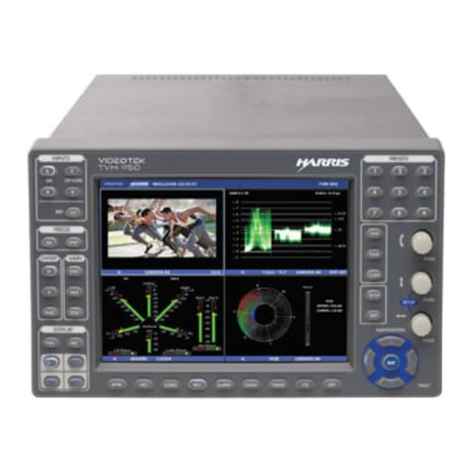
Videotek
Videotek TVM9100PKG Installation and operation handbook
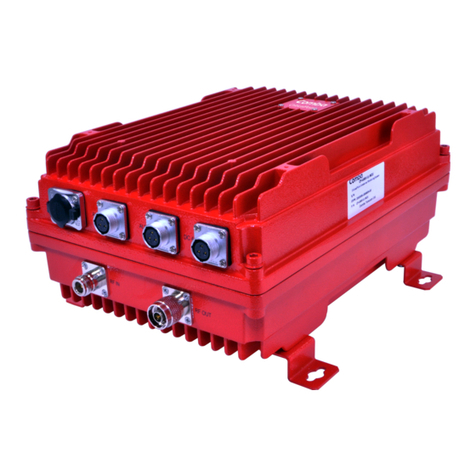
COMBA
COMBA CriticalPoint QE Series user manual
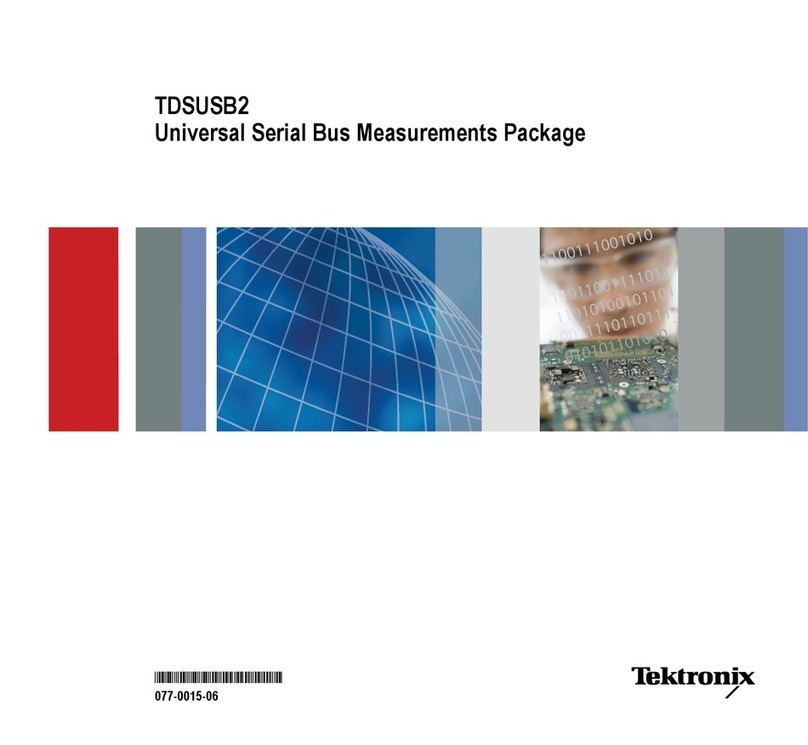
Tektronix
Tektronix TDSUSB2 manual
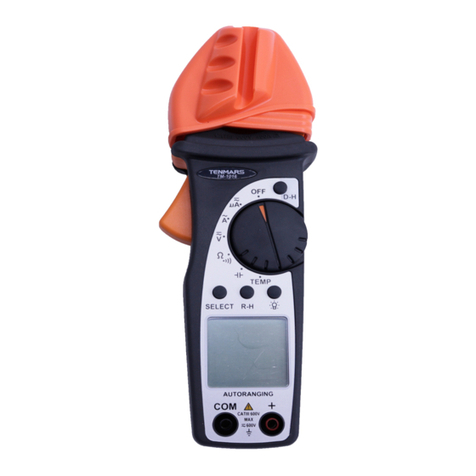
Tenmars
Tenmars TM-1016 user manual

PCB Piezotronics
PCB Piezotronics 3501B122KG Installation and operating manual

Omega
Omega Volume VII-System Description Operation manual
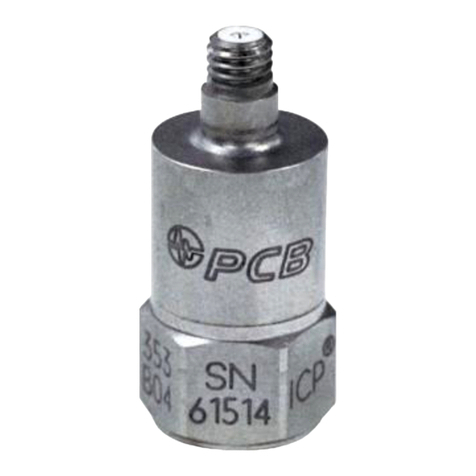
PCB Piezotronics
PCB Piezotronics 353B04 Installation and operating manual
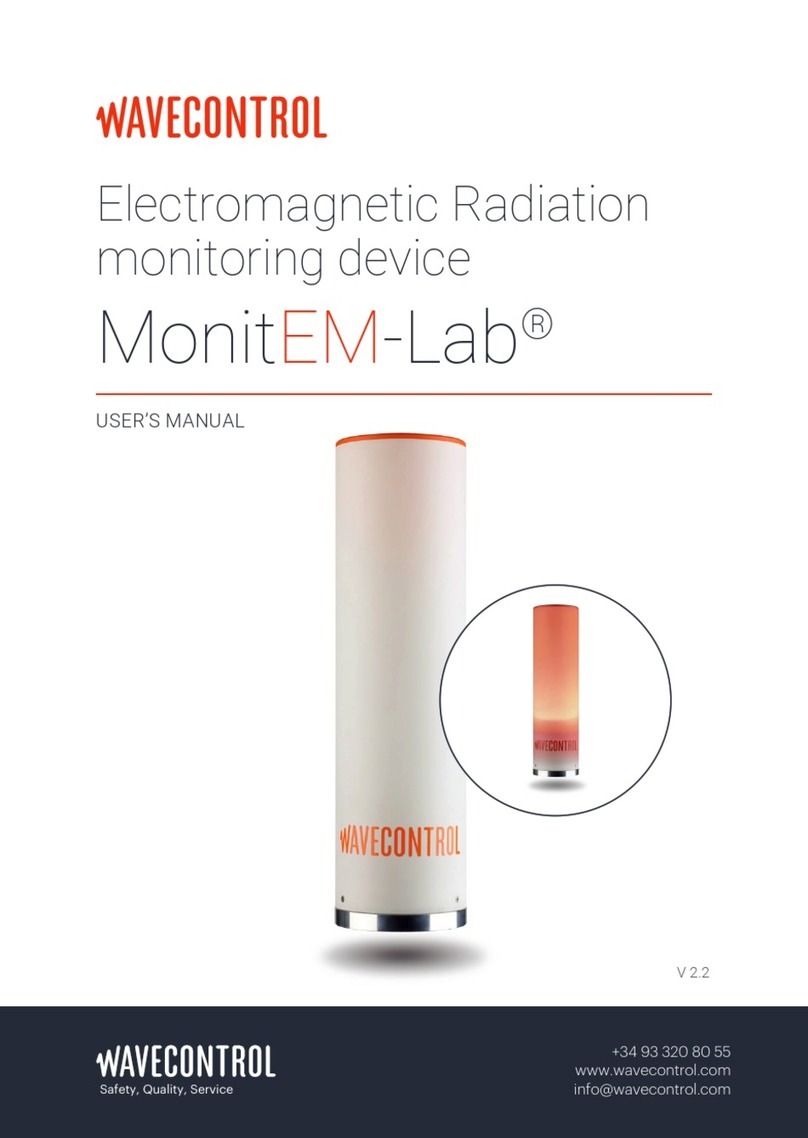
WAVECONTROL
WAVECONTROL MonitEM-Lab user manual

Fluke
Fluke 917X Series Technical guide
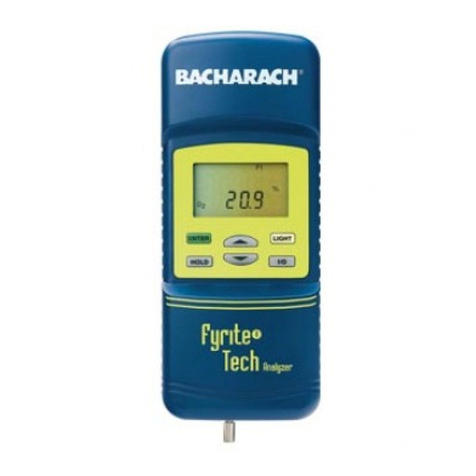
Bacharach
Bacharach Fyrite Tech 50 Instruction, Operation & Maintenance
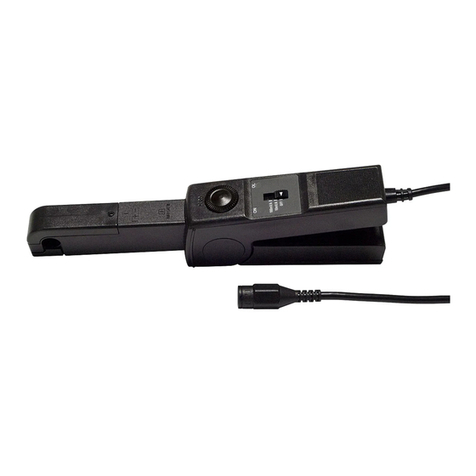
Chauvin Arnoux
Chauvin Arnoux E3N user manual

LOVATO ELECTRIC
LOVATO ELECTRIC DMED302MID instruction manual


